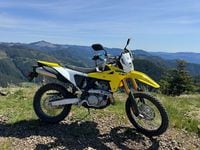Humbling. If there is one word that I can think of that perfectly describes trials, that's it. Whether you're a pro motocross racer, an expert off-roader or a similarly decorated motorcycle operator, you will unquestionably be force-fed a heaping dish of humility the first time you ride a trials bike. At best, you'll feel like a seasoned beginner, and at worst, you'll feel like you've never even ridden a motorcycle. How do I know? Because DR test rider Kris Keefer and I set out to compete in the final round of the AMA/NATC Trials Championship near Donner Pass, California. With brand-new gear, a sweet new Sherco, a shiny Gas Gas, an experienced minder and a combined 42 years of off-road experience between us on everything from supercross to EnduroCross, Kris and I were pretty confident we'd have the trials deal handled. We should have known better.The credit for this story idea has to go to Dirt Rider photographer Shan Moore, whose love for trials is almost as contagious as his loud, long laugh. Shan initially thought it would be funny to watch two complete rookies give trials a shot, and before we knew it Keefer and I found ourselves sitting on the starting line in Donner getting rapid-fire last-minute advice from about five different people. Trials is a sport bound by tradition and fueled by rules, but the gist of it is simple: Competitors complete a set number of loops around a course that consists of several sections. In our case, Kris and I were signed up for two days of competition at Donner, each with three loops containing 12 sections. At each section, riders go one at a time and attempt a designated line that corresponds to the class they are entered in, with the end goal of not dabbing (putting a foot down) from the time their front axle enters the section until it leaves it. The various sections are managed by "checkers," club members who hold up fingers for each dab they see. Each time a rider puts a foot down it counts as a dab, a loss of one point. They stop counting after three, unless the rider crashes or makes a similarly devastating error (more on that later), in which case a score of five is given. It's not a race, though there is a time limit both within the individual sections and on the overall course. At the end of the day, the rider with the least points wins. Simple enough, right?On the transfer to the first section, Keefer and I were able to stretch our trials legs and get a feel for the bikes. In comparison to big bikes, trials motorcycles feel small and light, with tight turning radiuses and smooth, effortless controls. I began the first day on the Gas Gas TXT 300 and felt familiar with the bite of the purpose-built tires, although the overall feel of the machine was more like a BMX bike than a normal motorcycle. Keefer started off on the Sherco ST 2.9 and immediately got a feel for doing some little footplants and wheelies. Despite our relative inexperience with the equipment, Keefer and I did have one ace up our sleeves: Ringo. President of the Plonkers Trials club and an experienced trials junkie, Johnny Ringo would ride along with us and be there to coach, advise and spot us on each section, as well as tease, scold and mock us when we messed up.When we arrived at the first section, we parked our bikes and scoped out the obstacles on foot. According to Ringo, the Clubman line that we were riding at the National was comparable to an Intermediate line at a local event, and the first section contained all of the usual elements in a typical trials section: Rocks, logs, tight turns and loose, tricky little climbs. As we surveyed the section, I noticed a familiar face walking nearby: California off-road ace Patrick Garrahan was eyeing up the Sportsman line in what just so happened to be his very first trials event. Garrahan said he's been riding trials at home over the last two summers and feels it helps his off-road skills. "For one thing, I don't get as much arm-pump since I've been riding trials," he commented while scoping out his line. "And in off-road, you get in the habit of going around gnarly stuff, but in trials you learn to just go over it."
Once he felt relatively ready, Keefer fired up his bike and gave it a shot. His technique looked solid, but a few small mistakes landed Kris a three for the section. "He went through that way too quickly," Ringo told me as I was preparing to go. "Slow down, and try to use finesse rather than attacking the course." As the whistle blew and I entered the section, I was as nervous as I ever have been on any starting line. I felt like I was under a microscope, and I was well aware of the fact that everyone saw my foot go down in the first tight corner. Another bobble up and over a steep rock ledge caused the checker's second finger to spring up, but fortunately I was able to ride it out for a score of two. I received a high-five from Ringo for my efforts, but was reminded that I made the same mistake that Kris did in charging through the section too quickly.Throughout the next few sections, both Keefer and I loosened up considerably, though we were anything but perfect. I quickly learned that a common theme for a trials beginner is to earn points (remember, a bad thing) in some of the dumbest situations possible. For example, I would sail over a bike-stand-sized rock without putting my foot down, only to dab in the tight, flat turn following the rock. Experiences like this quickly made me realize that a good trials rider isn't just one who can make it up gnarly obstacles, but is one who is well-rounded and can turn, stop and manipulate the bike at will. Compared to the other riders on the course, Kris and I looked like floundering novices in this regard.Coming into one of the last sections of the first loop, I flowed through a set of switchbacks, up and over a tricky ledge and across a few small boulders to take my first "clean" (no dabs) of the event. I coolly thanked the checker as he punched the "0" on the scorecard attached to my number plate, but inside I was celebrating like I'd just seen a double rainbow. That is what trials is all about! It may be frustrating when you make a stupid mistake, but the feeling of accomplishment after completing a tough section with no dabs was the same feeling I had when I first started riding a bike. Keefer commented that he noticed the same thing when he bagged his first clean on the very next section.Beginning the loop for the second time, we found that the sections were anything but easier the next time around. Many of the smaller rocks had moved around, and the approaches to some of the bigger obstacles were just as tricky as they were the first time. As always, Ringo was right there to offer advice, most of which he was repeating for the sixth and seventh time. Apparently, us big bikers shared a not-uncommon adherence to the age-old saying "when in doubt...pin it!" which is not the best approach to trials. Slow is smooth and smooth is better, and both Kris and I had to consciously work to depart from our off-road instinct to simply hammer the throttle when we got out of shape.Loop three went a bit more smoothly, but we learned a few valuable lessons in the process. First, Keefer earned himself a five when he apparently failed to alert the checker that he was entering a section. I then matched this mistake with an automatic three when I slid my foot two inches to one side during a dab (in trials, you can pivot on your foot without penalty when you put it down, but sliding it is a no-no). Now, I'm not a hotheaded person in the least, but I was ready to march over to the checker and give him a piece of my mind following this last call. However, I was stopped by the recognition of the absolute impartiality with which the checkers make their calls. When a rider puts a foot down and gets a point or messes up big-time and earns a five, the checkers simply report the scores. There is no malice in their determination, nor is there any compassion. For all intents and purposes, they are simple observers, and the checker's objective presence makes you realize that when you mess up in trials, you really have nobody to blame but yourself.
Gas Gas TXT 300
nSimilar to the bike that Cody Webb just clinched the trials championship on, the Gas Gas TXT 300 had a more defined clutch friction point than the Sherco, but the control was equally as impressive. With more motor and a ton of torque, the Gas Gas was happiest when wound up and ridden slightly high in the revs. Turning felt very light and nimble, though the bike seemed to be better suited toward a bigger, taller pilot.
At the end of the day, Keefer and I checked our results (also available on www.natctrials.org) and found that we were eighth and seventh, respectively, in the Clubman class. We both had 10 overall cleans, though Keefer had earned a dozen more points than me, mostly due to his one unfortunate five and a few other small mistakes. When we started the second day of competition the following morning, I could see fire in my friend's eyes. Keefer was a man on a mission and came out of the gate riding smoothly with much better throttle control and a looser overall style than the first day. "He's starting to get it," Ringo noticed as Kris grabbed his second clean of the day. In watching, I could tell that Kris' natural balance and bike skills were helping him through, but more importantly he was allowing the bike to work underneath him. Motocrossers have a tendency to squeeze like crazy with our knees, but trials requires the opposite technique in order to negotiate the tight turns. I had to mentally step up my focus a notch, and by the end of two loops, Kris and I were separated by only two points.Although we were starting to feel more at home, the morning was not without its errors. On one section that consisted of a big zigzag across a few ledges, I spotted a shortcut of sorts from one platform up to the next. Ringo advised me not to give the steep step a shot, but my enduro-sharpened line selection convinced me it was the best way to go. With Ringo as my spotter I managed to sneak up the climb without a dab, but instantly heard the piercing blow of the checker's whistle followed by a call of "Five!" As it turned out, the line I'd taken belonged to the Sportsman class, and I was penalized for not sticking to the Clubman route. To be fair, the checker allowed me a re-ride when he saw that the arrow marking the line had been hidden behind a bush, but I ended up bagging another five when I rolled backward a few inches on a safety dab around a turn-another trials no-no. I was just doomed to get a five on that section.Unfortunately, my day came to an abrupt halt when one of the wires on my bike's CDI box melted to the exhaust, causing a DNF for the day. Keefer went ahead solo to complete the loop, and I decided to head out on foot to watch the remaining riders hit the course. One thing I noticed while cruising around is how totally cool trials fans are. In contrast to the dressed-up crowd at an AMA Supercross, trials fans are the real deal. There were thousands of people on hand at Donner to watch the action, and most of them spent the day clambering all over the mountain with a hydration pack and a huge smile. Trials is one of the most spectator-friendly sports I've seen-the action is fantastic-which makes it even more of a mystery why the general public hasn't latched on yet. It's almost as if trials is the hidden gem of motorsports, one of the only disciplines that hasn't been inundated with energy drink sponsors, fireworks-assisted rider intros and over-the-top television packages. It sucks to see such a cool sport going almost unnoticed by mainstream motorcycle fans, but at the same time it was kind of fun to visit such a down-to-earth culture.Aside from the hard-core fans, the most mind-blowing part of watching trials live was getting to see the pro riders in action. These mutants seem to defy the laws of physics as they hop over vending-machine-sized rocks, scale vertical walls and drop off massive leaps without even breaking a sweat. I'd seen several of the top pros-Cody Webb, Keith Wineland, Ron Commo and Pat Smage-race EnduroCross in person before, but to see them in their element was a jaw-dropping experience.When the final results came through, Keefer improved on his previous day's scores dramatically with an impressive fifth place in the Clubman class and a whopping 16 cleans. Garrahan came through with a third place on Saturday, proving that his favorite cross-training tool had paid off. When the dust had settled following the event, it was obvious that Keefer and I had had our butts handed to us and that we'd learned much of what trials is about the hard way. It was humbling to feel like such newbies on two wheels, but I was more than happy to let my pride get bruised in exchange for the skills I picked up. From being smoother on the controls to picking better lines over obstacles, the things that Kris and I learned in two days of riding trials are arguably more valuable than what we'd pick up during two weeks of motoing in our comfort zone on big bikes. After competing in a trials national, there is no doubt in my mind that the sport can make a better rider out of anyone, and that it's quite possibly one of the most rewarding things you can do on two wheels. If you haven't done so already, I'd highly recommend you give trials a shot. Your pride will heal, I promise.The Machines
While planning our foray into the unknown world of trials, it was obvious that Keefer and I would need some solid bikes to compete on. Luckily, both Gas Gas and Sherco were more than happy to provide two top-of-the-line trials bikes. Here's a quick look at the seat-less beauties that we bombed around on for two days.
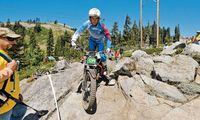
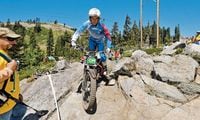
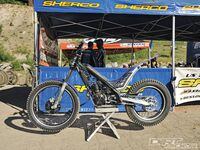
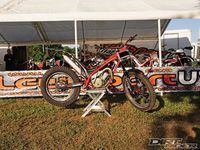
/cloudfront-us-east-1.images.arcpublishing.com/octane/F7QWUM4NZFDQ5CXBP3H5BQ33YY.jpg)
/cloudfront-us-east-1.images.arcpublishing.com/octane/3GCSEHNJBFFRTEOEKRYN5ZMYJM.jpg)
/cloudfront-us-east-1.images.arcpublishing.com/octane/6JJ3XIOJWBED5DQIAKUBNCLTZE.jpg)
/cloudfront-us-east-1.images.arcpublishing.com/octane/EXJM3ZOP5JGOFL2BNU2G6KCGX4.jpg)
/cloudfront-us-east-1.images.arcpublishing.com/octane/2VHGWMYT4RE33JOHF3ATQ4CWBY.jpg)
/cloudfront-us-east-1.images.arcpublishing.com/octane/MAA7CTOAVJEH5H5QNC45LBIHPM.jpg)
/cloudfront-us-east-1.images.arcpublishing.com/octane/NOJSQ77E2BHR3IMKEJPCENML4A.jpg)
/cloudfront-us-east-1.images.arcpublishing.com/octane/B5QDMPSPWRA3RBBQJUC4FNI4JI.jpg)
/cloudfront-us-east-1.images.arcpublishing.com/octane/B3BPW2WOCNCUZPL2QVICQUC4VU.jpg)
/cloudfront-us-east-1.images.arcpublishing.com/octane/MLFO3UACYFHHLLP7WUYGUCFCBI.jpg)
/cloudfront-us-east-1.images.arcpublishing.com/octane/RS3JKVKIG5H2TFBCQXCLFWSJ6Q.jpg)
/cloudfront-us-east-1.images.arcpublishing.com/octane/6ONR4CR3FBB5PDN5SQPFB36CSI.jpg)
/cloudfront-us-east-1.images.arcpublishing.com/octane/3GF26TF5YVFIJCHZJMYTMWIPPY.jpg)
/cloudfront-us-east-1.images.arcpublishing.com/octane/QSWIPGJUFNAENBSGFG5ASKGUCY.jpg)
/cloudfront-us-east-1.images.arcpublishing.com/octane/JEB56YXHFZDYRBTQRSUPSIQT4E.jpg)
/cloudfront-us-east-1.images.arcpublishing.com/octane/2U42JYK7ZVCK5FISIIFYDLMFQY.jpg)
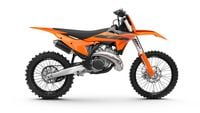
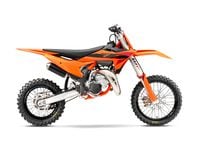
/cloudfront-us-east-1.images.arcpublishing.com/octane/2F2YWJRM4ZDCBEBIHI6HAZXI5U.jpg)
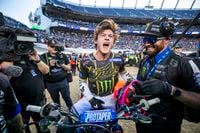
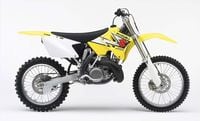
/cloudfront-us-east-1.images.arcpublishing.com/octane/I37LN27L3ZHRHO6DZRHHBLBCZQ.jpg)
